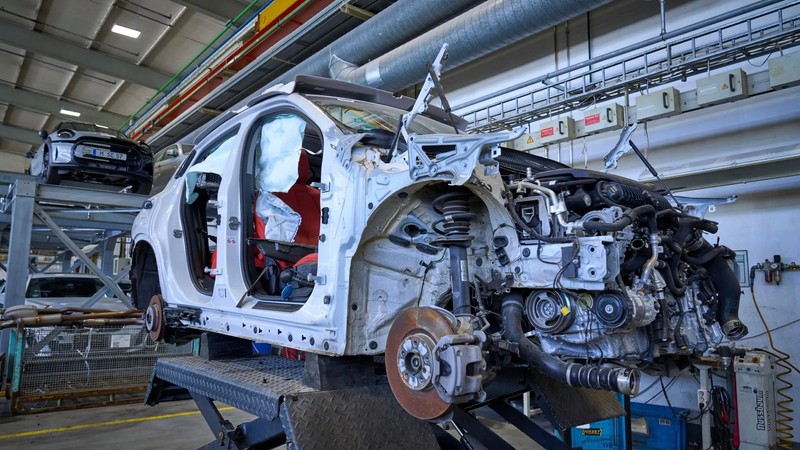Absa Purchasing Managers’ Index (PMI) for October 2025 released on Monday raised alarm bells with the index indicating a decline in manufacturing sentiment. Absa said that the seasonally adjusted PMI declined by 1.6 points to 49.2 in October, reversing the gain seen in September when the index reached 50.8.
The Index said the latest reading suggests that the manufacturing sector remains under pressure, with respondents pointing to subdued domestic demand, sluggish exports, and persistent logistical challenges as key headwinds.
“On the export front, demand is also sluggish, complicated by the rise in US trade tariffs and logistical challenges. The business activity index decreased by 5 points to 49.4 in October, slipping back into contractionary territory for nine of the ten months in 2025. However, October activity remains the second-highest reading for 2025, following 54.4 points in September.”
Professor Bonke Dumisa, an independent economic analyst, said the negative Absa PMI of 49.2 in October 2025 from 50.8 in September 2025 is not surprising, due to lingering doubts whether the trajectory of our economic growth rates changed from negative to positive as the positive PMI in September may have indicated. “The lower overall domestic demand and lower overall exports indicated that the economic environment is not yet as positive as we anticipated. The manufacturing levels in South Africa do not yet reflect the recovery sentiment we anticipated. The increase in unemployment rates casts a shadow on the recovery sentiment, with even lower bonuses recorded during the period under review.”
Professor Waldo Krugell, an economist at North-West University, said the increase in the PMI in September was an odd number out. “The decline back to negative territory in October is a more accurate description of the manufacturing sector under pressure. The report highlights weak domestic and foreign demand. Domestically we are waiting for a catalyst for growth, but unfortunately, the grand reform process takes time to deliver significant changes (and good changes should be made irreversible).”
Professor Raymond Parsons, a North-West University Business School and University of Western Cape economist, said it is further confirmation that the high-frequency data is sending out mixed messages about the economic outlook. “Although there is an economic upturn underway, GDP growth forecasts have been trimmed for both 2025 and 2026. It also emphasises the extent to which policy must pivot towards ensuring that the tailwinds outweigh the global headwinds currently facing the economy. This will be an important test of the Medium-Term Budget Policy Statement.”
The Index added that the demand recovery from September was reversed. “New sales orders decreased by 3.9 points to 48.9 in October, following a substantial gain of 5.4 points in September. ‘Sales orders have contracted for eight of the ten months this year, indicating that the economy remains under pressure and demand remains subdued. Global demand remained under pressure as exports contracted for a seventh successive month.”
The Index said that new sales orders decreased by 3.9 points to 48.9 in October, following a substantial gain of 5.4 points in September. “Sales orders have contracted for eight of the ten months this year, indicating that the economy remains under pressure and demand remains subdued. Global demand remained under pressure as exports contracted for a seventh successive month.” The supplier deliveries index decreased by 1.4 points to 53.5 in September. It remains to be seen whether this decrease (signalling faster delivery times as the index is inverted) is due to the contraction in new orders or recent news of a better-performing port in KwaZulu-Natal.
The Index added that the employment index increased by 2.2 points in October, reaching 45.1, stuck in contractionary territory since April 2024. “This follows a 4.9 contraction in September. As demand remains subdued and activity remains volatile and minor improvements are not sustained, manufacturers are reluctant to increase staff levels.”
Lara Hodes, an Investec economist, said this is reflective of the subdued economic environment, with growth of just 1.1% projected for this year. “Globally, demand remains somewhat constrained with export activity contracting for the seventh month in a row, according to the Bureau for Economic Research (BER) the supplier delivery index fell by 1.8 points to 53.5 after increasing in September (the index is inverted so a decrease suggests faster deliveries). This can be attributed to either the decrease in new orders, according to the BER, or alternatively, “recent news of a better-performing port in KwaZulu-Natal.”
BUSINESS REPORT
